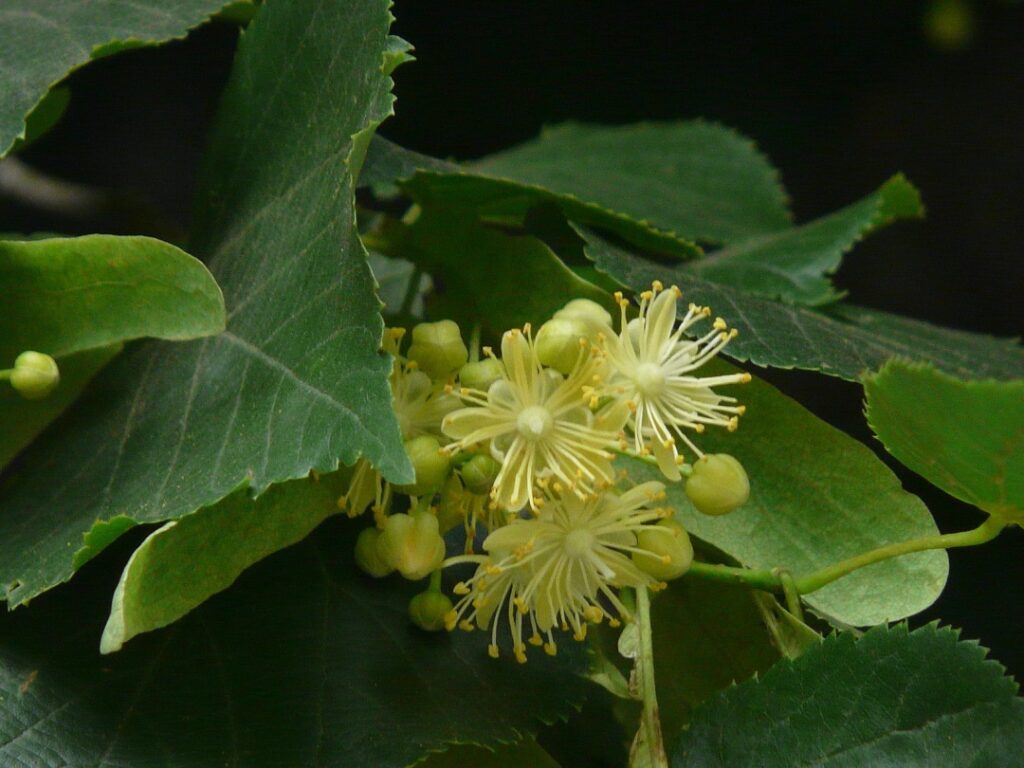
Dinesh Valke, CC BY-SA 2.0
Romania
Linden Tree
Tilia europaea / T. vaulgaris

Dinesh Valke, CC BY-SA 2.0
General Description / Cultural Significance
The air of Romania is filled with the pleasing sweet, honeyed aroma of the Linden Tree, sometimes called Lime Trees (Tilia europaea). The deciduous tree is found throughout the country and is known for being a superb source of nectar for honey.
To the people of Romania, the Linden tree is more than just a fragrance. It is their history and their culture. Romanians feel very connected to nature and when forming their customs and literary landscapes they intertwined themselves with the roots of the Linden. There is a constant connection between the growth of mankind and the continuation of a tree. As generations of countrymen change, the tree does not. The Linden stays, and according to the Romanians, sees all. The Linden can live over 200 years on average with some Linden living 500 or more, such as Romania’s famous natural monument Eminescu’s Linden Tree named after the legendary Mihai Eminescu who reportedly wrote some of his best works under that Linden.
Folklore and fairytales prove a prominent place for the role of the Linden with multiple stories centering around it. In “The Swung Linden Tree” the tree is given the qualities of being redemptive and healing through the story of Christ. In another story, “The Girl in the Forest,” the only way to be assured of safety in an evil forest is to have rope made from the tree of Tilia europaea. The importance of the Linden reaches almost religious status in terms of the connection between Romanians and the tree.
The Linden Tree also serves practical purposes. Flowers are taken and dried to make medical teas. The wood of the Lime Tree is used vastly in construction as it is very strong. Even paint is created from the yellow flowers.
Climate Change / Conservation Status
Due to global warming and climate change, Romania faces intense heat waves and less rain. This affects the Linden, as the Tilia europaea is not particularly drought tolerant. It likes moist, fertile, well-drained soil. Despite the deep cultural attachment and benefits of the tree to the environment, Romanian foresters are being encouraged to grow oak species over Tilia europaea. As temperatures increase, the Linden will continue to struggle. In addition, experts predict worsening wildfires which will also further reduce the Linden.
Sources
Permanent Observer Mission of Romania at United Nations. This statement can be found on the World Sensorium Original Website.
Ţenche-Constantinescu, A. M., Varan, C., Borlea, F., Madoşa, E., & Szekely, G. The symbolism of the linden tree. JOURNAL of Horticulture, Forestry and Biotechnology, 19(2).
Tilia x europaea (European Linden). Gardenia Creating Gardens. https://www.gardenia.net/plant/tilia-x-europaea.
Weryszko-Chmielewska, E., Piotrowska-Weryszko, K., & Dąbrowska, A. (2019). Response of Tilia sp. L. to climate warming in urban conditions – Phenological and aerobiological studies. Urban Forestry & Urban Greening, 43, 126369. https://doi.org/10.1016/j.ufug.2019.126369.

